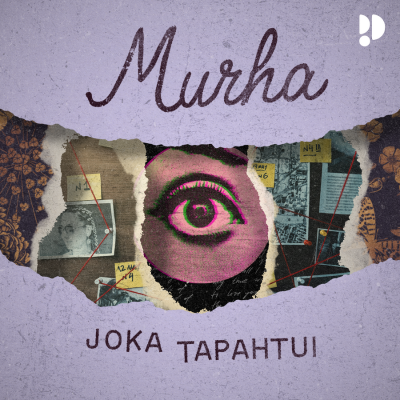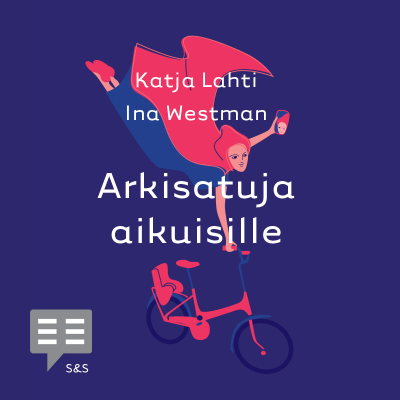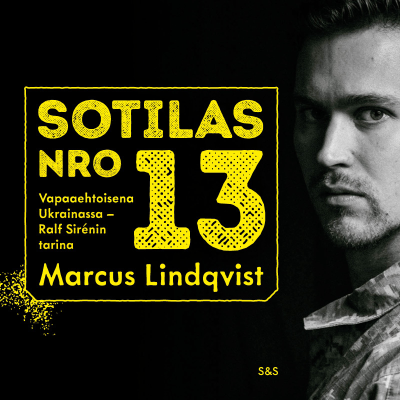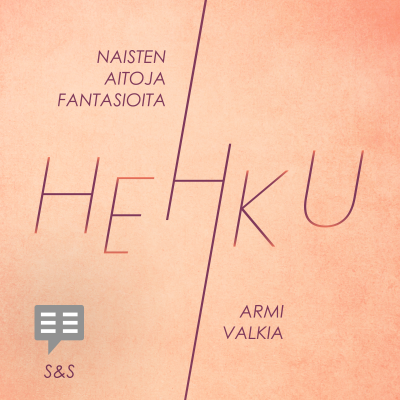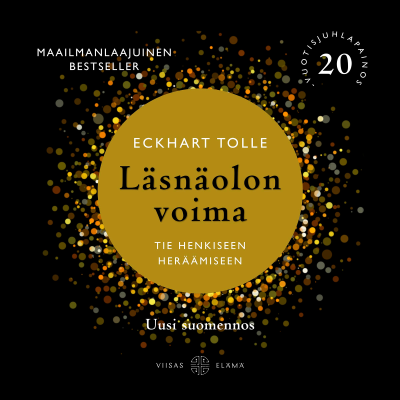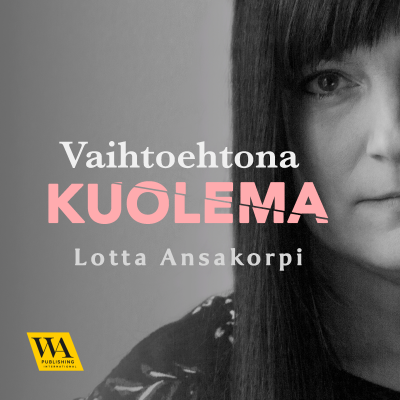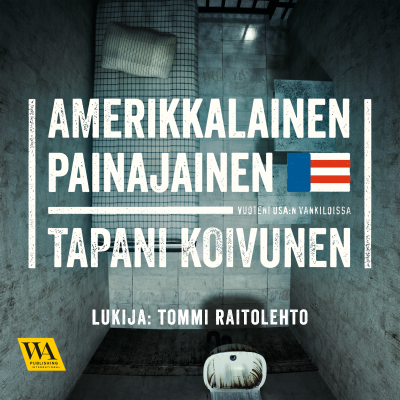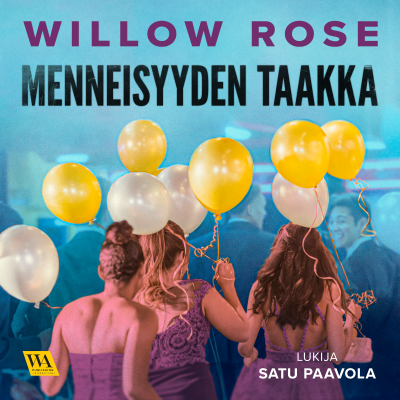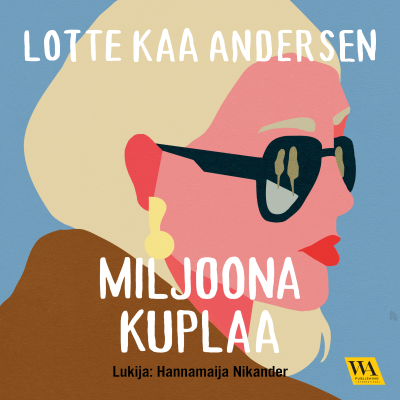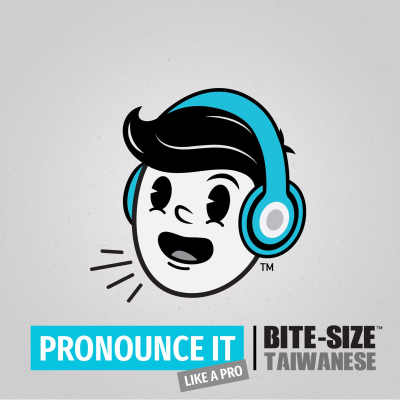
Bite-size Taiwanese | Pronounce it Like a Pro
Podcast by Bite-size Taiwanese
Rajoitettu tarjous
3 kuukautta hintaan 1 €
Sitten 7,99 € / kuukausiPeru milloin tahansa.

Enemmän kuin miljoona kuuntelijaa
Tulet rakastamaan Podimoa, etkä ole ainoa
Arvioitu 4.7 App Storessa
Lisää Bite-size Taiwanese | Pronounce it Like a Pro
Bite-size Taiwanese is a podcast giving you a taste of real, everyday Taiwanese. Co-hosts Phil & Alan will guide you through the ins and outs of the Taiwanese language (Southern Min/Hokkien) with light-hearted, fun (and occasionally funny) conversations on how it’s used in Taiwan. Pronounce it like a Pro is a 10-episode series geared towards improving Taiwanese pronunciation focusing on common problem areas for English speakers. Try our other podcasts too: Bite-size | Newbie, Bite-size | Elementary
Kaikki jaksot
24 jaksotIn this episode, we’ve talked about Taiwanese dialects, regional differences, and a bit on Taiwan’s early immigrants and development. (These show notes use tables and rich formatting. Please visit the episode webpage for an optimal viewing experience.) Since there are several dialects and accents in Taiwan, what you hear from one native speaker may sound quite different from another. This could be challenging when you learn Taiwanese. We hope this lesson will guide you through different regional accents and give you some historical background as well. ORIGIN: THE TWO MAJOR DIALECT GROUPS In the 17th century, immigrants from southern Fujian province in China started to arrive in several waves to Taiwan. Specifically, most came from two different regions: “Tsuân-tsiu 泉州” (Quanzhou) and “Tsiang-tsiu 漳州” (Zhangzhou). The two dialects are closely related and both belong to the Southern Min language. Over time, they began to intermingle and different dialects sprang up that were a mixture of these two types. In addition, these dialects received some influences from other languages such as Hakka, Aboriginal Languages, Japanese, and Mandarin. The two groups represent the two ends of a whole dialect continuum called “Tsiang-tsuân-lām 漳泉濫”, literally “Tsiang-Tsuan-mix”. Different local accents are called “khiunn 腔” or “khiunn-kháu 腔口”. Origin & traditional name Geographical description Tsuân-tsiu khiunn 泉州 腔 (Quanzhou accent) Hái-kháu khiunn 海口 腔 (Seaport accent) Phian-tsuân khiunn 偏泉 腔 (Quanzhou-leaning accent) Phian-hái khiunn 偏海 腔 (Seaport-leaning accent) Phian-tsiang khiunn 偏漳 腔 (Zhangzhou-leaning accent) Phian-lāi khiunn 偏內 腔 (Inland-leaning accent) Tsiang-tsiu khiunn 漳州 腔 (Zhangzhou accent) Lāi-poo khiunn 內埔 腔 (Inland accent) REPRESENTATIVE DIALECTS AND COMMON ACCENTS 1. The two ends: Lukang & Yilan The Lo̍k-káng khiunn 鹿港 腔 (Lukang dialect) usually held up to be most representative of the Hái-kháu 海口 (Seaport) group. On the flip side, the Gî-lân khiunn 宜蘭 腔 (Yilan dialect) is a typical example of the Lāi-poo 內埔 (Inland) group. 2. Two common accents: North (Taipei) & South (Tainan, Kaohsiung) Except for those ones on the two ends, most Taiwanese dialects fall in the two categories in the middle, which are the basis for the two general or common accents, or the so-called “Thong-hîng khiunn 通行 腔”. Urban areas, media and younger people tend to use one of the common accents. What is perceived as the “common” accent also differs in Tíng-káng / Pak-pōo 頂港 / 北部 (the North) and Ē-káng / Lâm-pōo 下港 / 南部 (the South). In Northern and Central Taiwan, there is a greater distinction between the Seaport and the Inland groups. The Tâi-pak khiunn 台北 腔 (Taipei dialect) is often considered the representative of the common Northern accent and historically it is more Phian-tsuân 偏泉 (Quanzhou-leaning). The South has a well-mixed hybrid of the two dialect groups and generally has more Phian-tsiang 偏漳 (Zhangzhou-leaning) characteristics. The most representative of the common Southern accent are the Tâi-lâm khiunn 台南 腔 (Tainan dialect) and the Ko-hiông khiunn 高雄 腔 (Kaohsiung dialect). Taiwanese Dialects Map For Bite-size Taiwanese podcasts, we generally use the “Common Southern” or “Inland-leaning” accent and also provide alternate pronunciations when they are very common. In our written materials like the Workbook, we follow the Ministry of Education convention of prioritizing the Southern dialect as the main pronunciation followed by the Northern dialect as a second pronunciation. DIFFERENCES BETWEEN THE TWO COMMON ACCENTS Let’s look more closely at the differences between the Common Southern Inland-leaning and the Common Northern Seaport-leaning accents, which you would most likely encounter. 1. Initial consonant “j-” In the Seaport and Seaport-leaning dialects, the “j-” sound often merges into the “l-” sound. In some Inland areas, “ji-” changes to “gi-” because of the influence of the Hakka language. This is commonly heard
In this episode, we’ve talked about Taiwanese dialects, regional differences, and a bit on Taiwan’s early immigrants and development. Please visit the episode webpage [https://bitesizetaiwanese.com/ep10-dialects-accents/] for a detailed outline of the episode! See omnystudio.com/listener [https://omnystudio.com/listener] for privacy information.
In this episode, we’ve talked about “when” exactly to change tones in a Taiwanese phrase or sentence. In particular, this episode: Tone Change Rules - Part 2 is about the tone change in Pronouns, Verbs & Verb Complements. (These show notes use tables and rich formatting. Please visit the episode webpage for an optimal viewing experience.) If you missed our last episode (Ep 08), which is Part 1 of this discussion, make sure to listen to it first. TONE CHANGE: PERSONAL PRONOUNS A pronoun can function as a noun phrase and it refers to someone or something mentioned elsewhere in the discourse. “Personal pronouns” are like “guá” (I), “lí” (you) and “i” (he/she/it), and they often behave a little differently than nouns when it comes to tone change. 1. Personal pronouns are “light” syllables and tend to change tone. Nouns or noun phrases often play the role of the subject or object in a sentence. As we’ve mentioned in the previous episode, the final syllable of the subject or object is always in the original tone. However, pronouns are unlike general nouns. They are “light” in sound and meaning, and tend to change tone. In fact, pronouns are rarely in their original tone unless they are emphasized. Compare the noun “a-bú” (mom), and the pronoun “guá” (I/me) in these sentences: (the “#” sign marks the break of the tone change group) A7-bú # teh2-1 khuànn2 tsheh. “Mom is reading a book.” Guá1 teh2-1 khuànn2 tsheh. “I’m reading a book.” A7-pah # tshuā3-1 a7-bú # khì. “Dad took mom there.” A7-pah # tshuā3-1 guá1 khì. “Dad took me there.” 2. At the end of a sentence, personal pronouns are usually placed in the “neutral tone”. Compare these two sentences: A7-pah # lâi7 khuànn2 a7-bú. “Dad came to see mom.” A7-pah # lâi7 khuànn #--guá0. “Dad came to see me.” In the first sentence “bú” is at the end of a sentence, so it’s in the original tone. The verb “khuànn” (to see) has to change tone because it’s followed by the object “a7-bú” (mom). In the second sentence, the pronoun “--guá0”, is put in the “neutral tone” (listen to Ep05, where we talk about the neutral tone in Taiwanese). Since the pronoun is like a light, little extra word that doesn’t count as a real noun and can’t be marked as the final word, the verb “khuànn” becomes the “final syllable” of the sentence, and is the one kept in its original tone. 3. When emphasized, personal pronouns follow the regular tone change rule just like nouns. In some situations, you might also hear the personal pronouns in the original tone. For example: A7-pah # lâi7 khuànn2 “guá”. “Dad came to see ME.” Here, the emphasis is on the pronoun “guá”, which stresses that it’s “me” as opposed to “you” or other people. As the final syllable of the sentence, “guá” now keeps its original tone like any other nouns. The verb “khuànn” follows the regular tone change rule since it’s mid-phrase followed by an object. 4. Exceptions: “i” and “in” In Modern spoken Taiwanese, the pronoun “i” (he/him, she/her, it) and “in” (they/them) are always in their changed tones. Even if they’re emphasized or said in isolation, they are always in the 7th Tone, as if they never have an original tone. For instance, you can say: Guá # sī3 guá #, i7 sī3 i7. “I am I, he is he.” The implication of this sentence is: “We are different, don’t compare me to him.” Here both pronouns are emphasized, but “i7” is still in its changed tone. TONE CHANGE: VERBS Verbs follow the regular tone change rule: the final syllable of a whole phrase keeps its original tone. 1. One-syllable verbs A one-syllable verb on its own or at the end of a sentence is in the original tone. It has to change tone when it’s mid-phrase, i.e. followed by an object. 2. Verbs with more syllables Verbs with two or more syllables are just like what we’ve learned from multi-syllable nouns: it’s only the final syllable that is in the original tone, e.g. tsíng1-lí, “to tidy up, to sort out”. If the verb is followed by a noun as the object, the final syllable of the ve
In this episode, we’ve talked about “when” exactly to change tones in a Taiwanese phrase or sentence. In particular, this episode: Tone Change Rules - Part 2 is about the tone change in Pronouns, Verbs & Verb Complements. Please visit the episode webpage [https://bitesizetaiwanese.com/ep09-tone-change-rules-part-2/] for a detailed outline of the episode! If you missed our last episode (Ep 08), which is Part 1 of this discussion [https://bitesizetaiwanese.com/ep08-tone-change-rules-part-1/], make sure to listen to it first. See omnystudio.com/listener [https://omnystudio.com/listener] for privacy information.
In this episode, we’ve talked about “when” exactly to change tones in a Taiwanese phrase or sentence. In particular, this Tone Change Rules Part 1 episode is about the tone change in Nouns, Time Words, and Measure Words. (These show notes use tables and rich formatting. Please visit the episode webpage for an optimal viewing experience.) TONE CHANGE HELP GROUP WORDS TOGETHER What’s interesting about Taiwanese is that it uses tone changes to help group together ideas and thoughts. In a typical sentence, most syllables change tones and only a few spots will hold on to their original tone. Those spots stand out more and mark the end of a “tone change group”. It’s kind of like a landing spot where you can rest before you begin your next concept, idea, or thought. You can also think of it as a type of punctuation, like: The day before yesterday, comma, my brother, comma, went to see a movie, period. “The day before yesterday” is like one whole unit that talks about time even though it consists of several words. “My brother” is another unit, which is the person or the subject. And “went to see a movie” is also another unit that says what he did. Taiwanese tone change is used to group words together into these larger units. LEARN FROM WHAT YOU HEAR Most native speakers are unaware that tone changes exist, let alone all the rules for when to apply tone changes. Typically native speakers just recall how they’ve heard something said before. For some new coinages and unfamiliar words, even Taiwanese people might have trouble using the right tone or changing the tones correctly. You also see many native speakers unable to tell you the original tones of words that rarely appear at the end of a phrase, or that aren’t easily broken down. That’s because they’ve only heard them as a changed tone and hardly in isolation. Learning tip: Our hope is that by learning these rules, you’ll be equipped with the tools to analyze any sentence that you’ve already heard or maybe seen written out, and be able to figure out which tones change and how the sentence should sound. That way, you can read it aloud to yourself with the correct tones, and start getting your mind used to hearing the correct pronunciation. Soon, you’ll start to speak by recalling what you’ve already heard before, and start repeating whole phrases or chunks with the correct tone, and not trying to think about it at the individual word level. TONE CHANGE: COMMON NOUNS AND PROPER NOUNS A “noun” is a person, place, or thing. In a sentence, they’re like the key players that stand in for the subject, object, or location. One-syllable nouns One-syllable nouns always in the original tone regardless of where it falls in the sentence. tsheh4 冊 “book” (a thing) ang1 翁 “husband” (a person) tau1 兜 “home” (a location) Exception: Words like “guá” (I), “lí” (you), “i” (he/she/it) are “pronouns”, which often behave a little differently than nouns. We will cover this in another episode. Nouns with more syllables Usually all the syllables before the final syllable will change. Word in isolation Word in isolation Combined in a noun phrase thâu5 頭 (head) moo1 毛 (hair or fur) → thâu7-moo1 頭毛 (hair on one’s head) Tâi7-uân5 台灣 (Taiwan) uē7 話 (speech) → Tâi7-uân7-uē7 台灣話 (Taiwanese language) Ka7-gī7 嘉義 (Chiayi, a place name) tshī7 市 (city) → Ka1-gī3-tshī7 嘉義市 (Chiayi City) Ka7-gī7 嘉義 (Chiayi, a place name) kuān7 縣 (county) → Ka1-gī3-kuān7 嘉義縣 (Chiayi County) Tshuà3 蔡 (a family name) Tik8-hông5 德宏 (a given name) → Tshuà2 Tik8-hông5 蔡 德宏 (a person’s full name) Lâu5 劉 (a family name) i7-su1 醫師 (Dr.) → Lâu7 i7-su1 劉 醫師 (Dr. Lâu) Âng5 洪 (a family name) sió1-tsiá2 小姐 (Ms.) → Âng7 sió1-tsiá2 洪 小姐 (Ms. Âng) Khóo2 許 (a family name) sian7-sinn1 先生 (Mr.) → Khóo2--sian0-sinn0 許 先生 (Mr. Khóo) Ka7-hô5 家豪 (a given name) hiann1 兄 (older brother) → Ka7-hô7 hiann1 家豪 兄 (a friendly and respectful way to call someone named “Ka-hô”) Siok8-hun1 淑芬 (a given

Arvioitu 4.7 App Storessa
Rajoitettu tarjous
3 kuukautta hintaan 1 €
Sitten 7,99 € / kuukausiPeru milloin tahansa.
Podimon podcastit
Mainoksista vapaa
Maksuttomat podcastit


